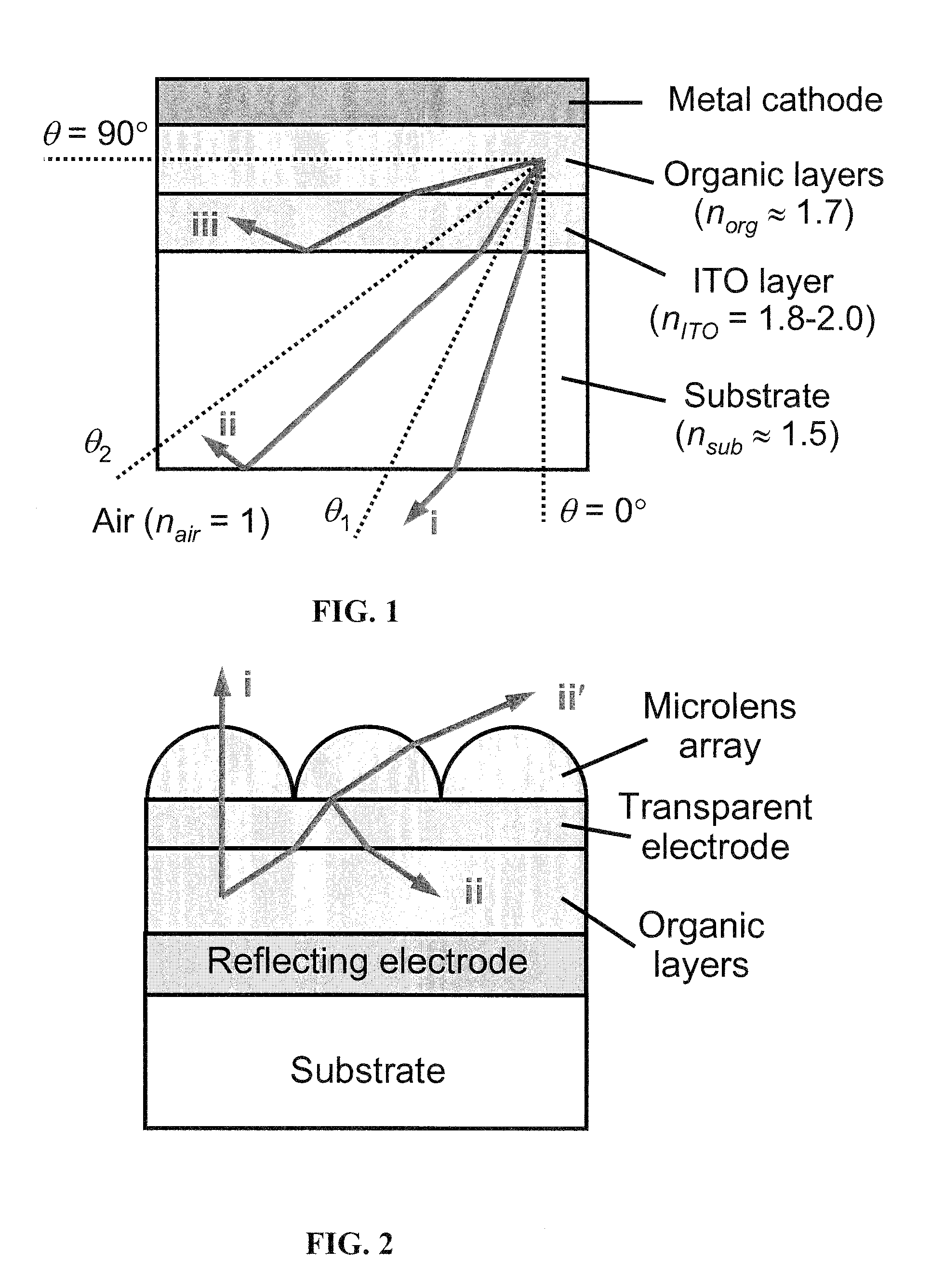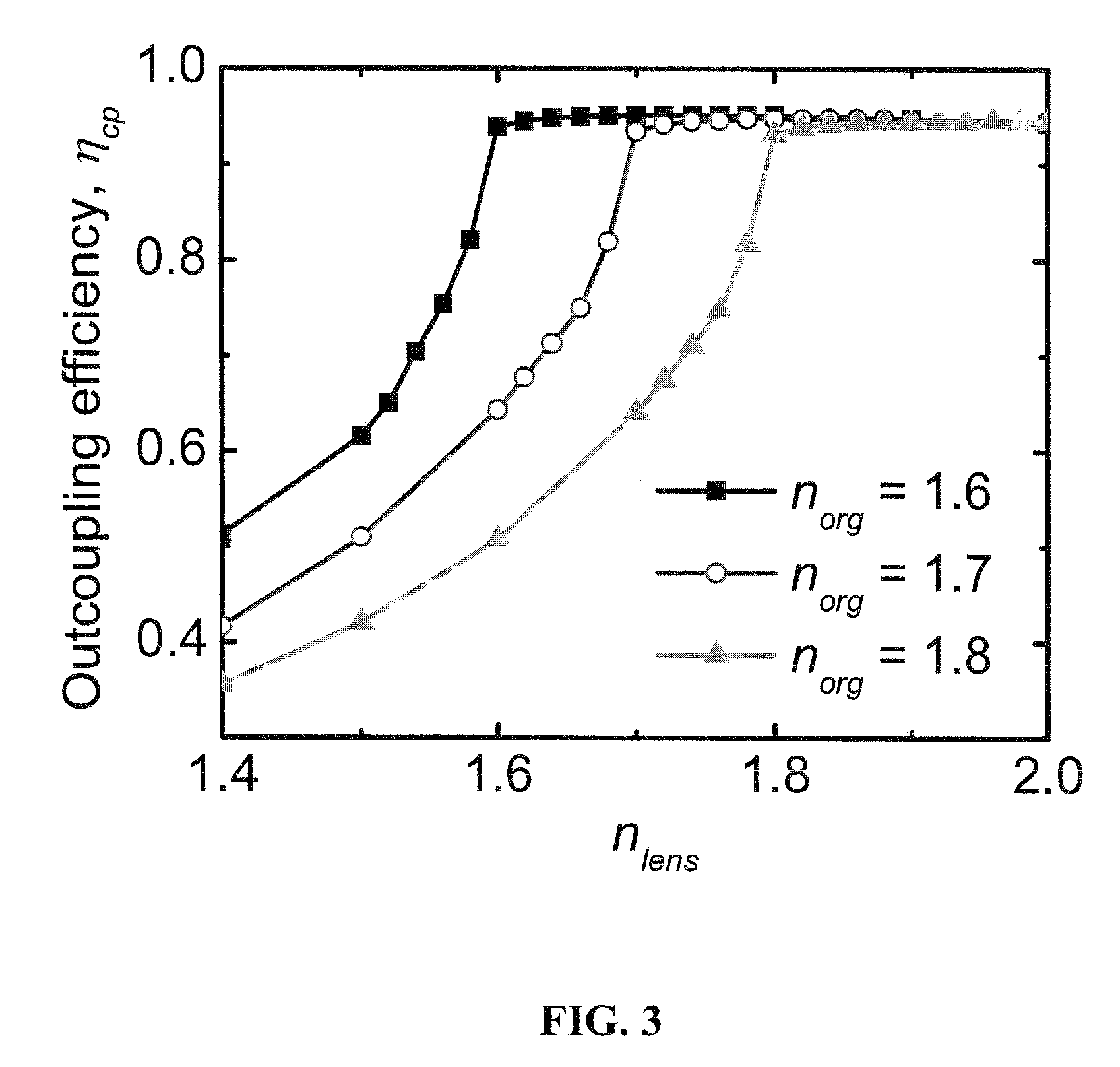Top-emission organic light-emitting devices with microlens arrays
a technology of organic light-emitting devices and micro-lens arrays, which is applied in the direction of discharge tubes/lamp details, discharge tubes luminescnet screens, electric discharge lamps, etc., can solve the problems of low light outcoupling efficiency, and the method does not have any effect on ito/organic waveguide modes, so as to enhance outcoupling efficiency, enhance outcoupling efficiency, and enhance outcoupling efficiency in oleds
- Summary
- Abstract
- Description
- Claims
- Application Information
AI Technical Summary
Benefits of technology
Problems solved by technology
Method used
Image
Examples
Embodiment Construction
[0013]Embodiments of the invention can provide organic light-emitting devices (OLEDs) with enhanced outcoupling efficiency. Specific embodiments can enhance the outcoupling efficiency by more than four times.
[0014]Embodiments of the invention incorporate microlens arrays on the emitting surface of a top-emission OLED. Incorporation of microlens arrays on the emitting surface of a top-emission OLED can greatly enhance the outcoupling efficiency in OLEDs. FIG. 2 shows a specific embodiment of a top-emission OLED utilizing microlens arrays on the emitting surface. The top-emission OLED shown in FIG. 2 incorporates a substrate, a reflecting electrode, organic layers, a transparent electrode, and a microlens array. The transparent electrode can have a thickness in the range of 20 nm to 150 nm, and preferably 50 nm-100 nm. The reflecting electrode can be made of, for example, a metal such as aluminum or silver. Alternatively, the reflecting electrode can be a dielectric mirror with a tran...
PUM
 Login to View More
Login to View More Abstract
Description
Claims
Application Information
 Login to View More
Login to View More - R&D
- Intellectual Property
- Life Sciences
- Materials
- Tech Scout
- Unparalleled Data Quality
- Higher Quality Content
- 60% Fewer Hallucinations
Browse by: Latest US Patents, China's latest patents, Technical Efficacy Thesaurus, Application Domain, Technology Topic, Popular Technical Reports.
© 2025 PatSnap. All rights reserved.Legal|Privacy policy|Modern Slavery Act Transparency Statement|Sitemap|About US| Contact US: help@patsnap.com



